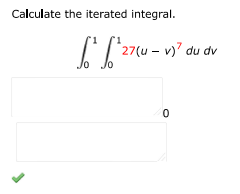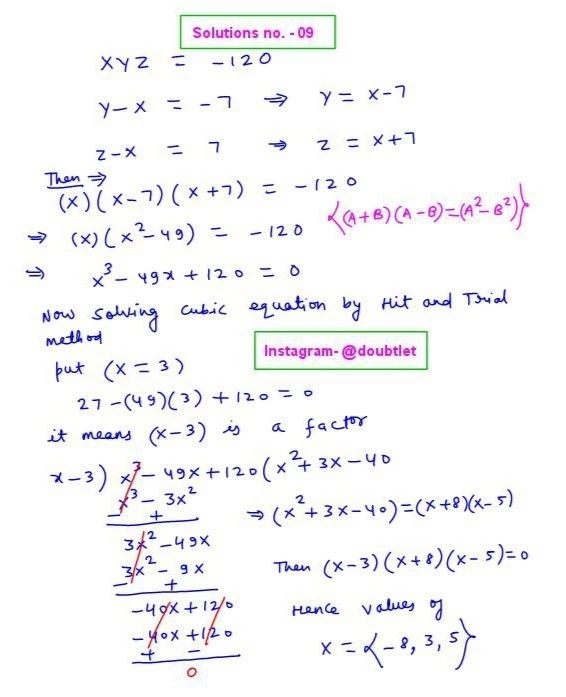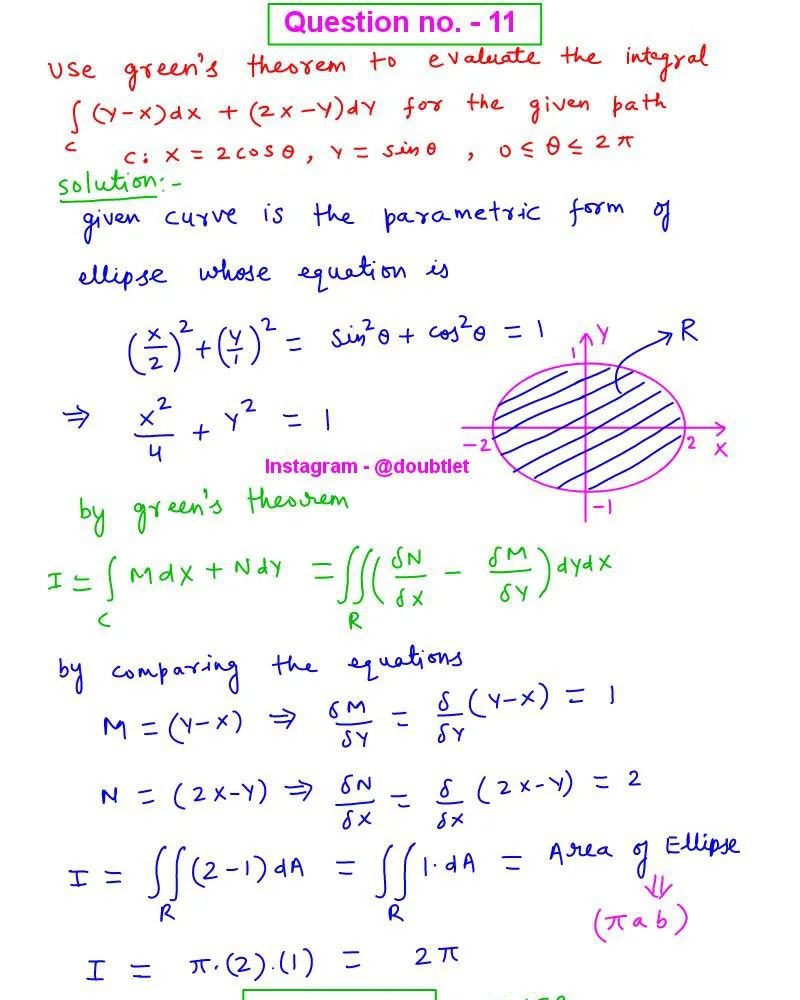









Question :
Calculate the iterated integral:

Solution:

Neetesh Kumar | November 29, 2024
Calculus Homework Help
This is the solution to Math 1D
Assignment: 15.1 Question Number 10
Contact me if you need help with Homework, Assignments, Tutoring Sessions, or Exams for STEM subjects.
You can see our Testimonials or Vouches from here of the previous works I have done.
Step-by-step solution:
Step 1: Evaluate the Inner Integral
The inner integral is:
Since is treated as a constant with respect to , we can factor out the constant :
Now, let's solve the integral of . The antiderivative of with respect to is:
So, we evaluate the definite integral from to :
Evaluating at the bounds:
- At :
- At :
Thus, the result of the inner integral is:
Factor out the :
Step 2: Evaluate the Outer Integral
Now, we evaluate the outer integral:
We can break this into two separate integrals:
First Integral: Evaluate
Let , so . The limits change accordingly: when , , and when , . Thus, the integral becomes:
The antiderivative of is:
Evaluating from to :
Second Integral: Evaluate
The antiderivative of is:
Evaluating from to :
Step 3: Combine the Results
Now, substitute the results of the two integrals back into the outer integral:
This simplifies to:
Final Answer:
The value of the iterated integral is:
Please comment below if you find any error in this solution.
If this solution helps, then please share this with your friends.
Please subscribe to my Youtube channel for video solutions to similar questions.
Keep Smiling :-)
Comments(0)



Leave a comment